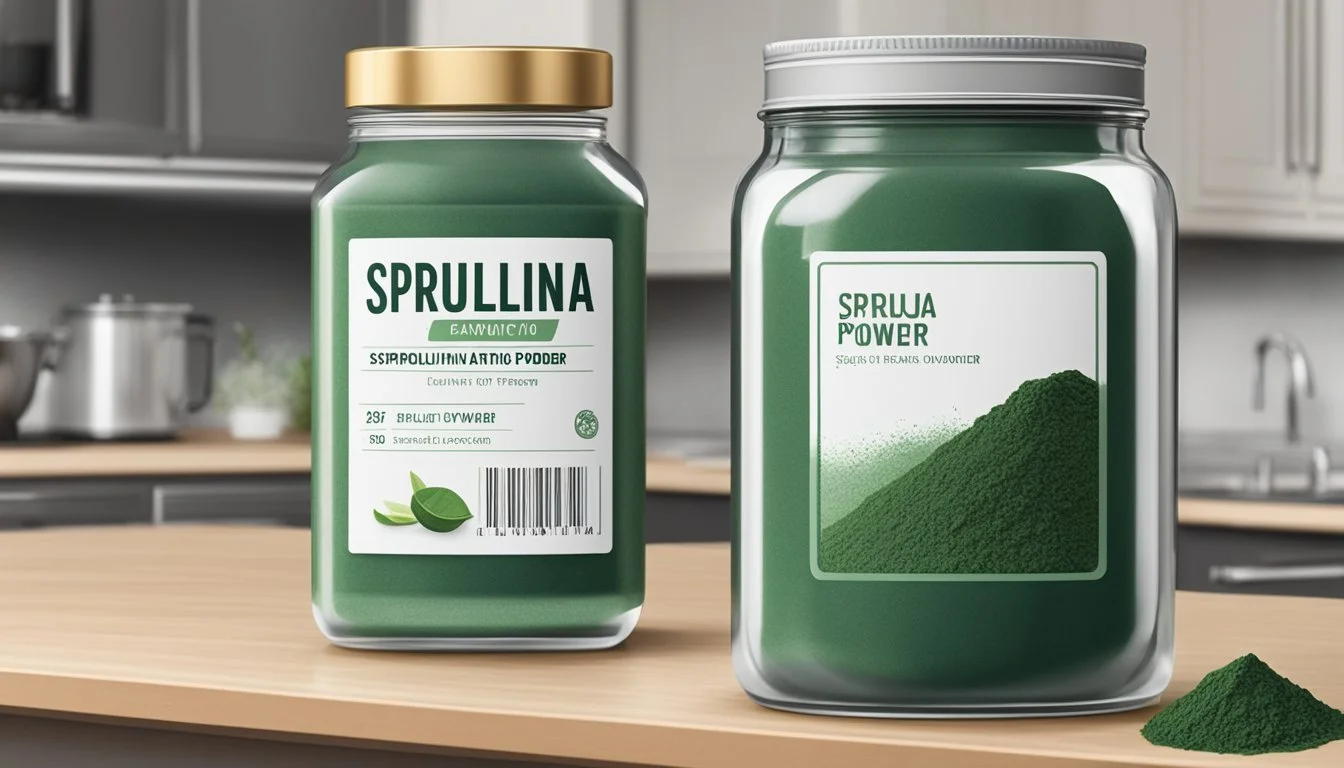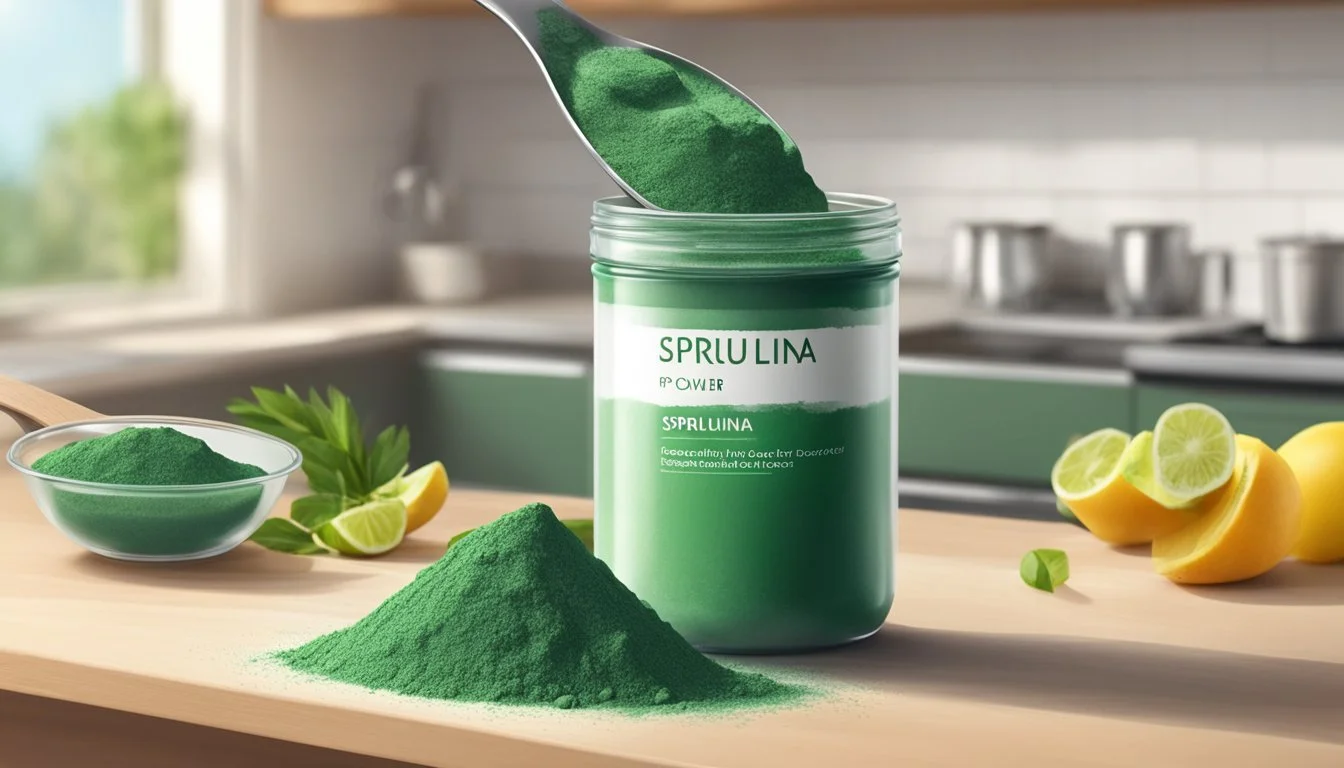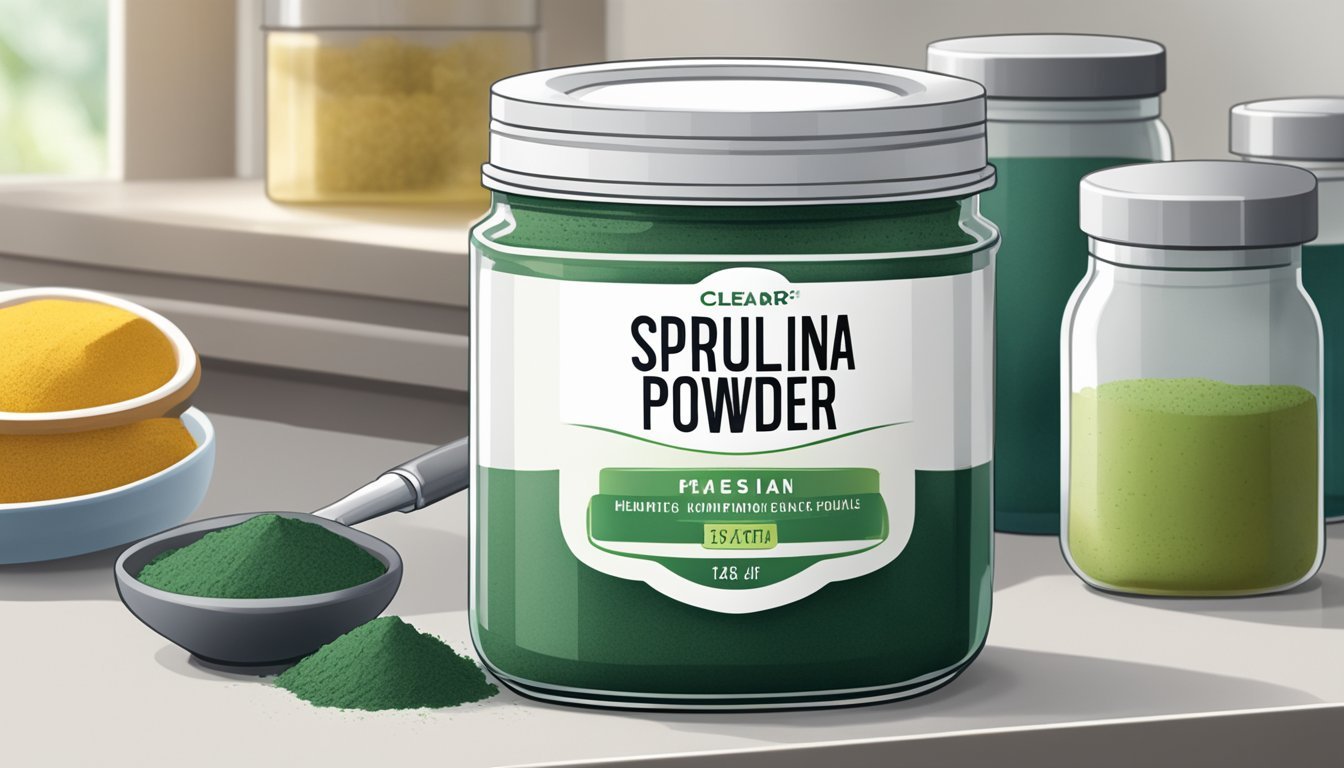Does Spirulina Powder Go Bad?
Understanding Shelf Life and Storage Tips
Spirulina powder, a dietary supplement derived from cyanobacteria, has gained considerable attention for its health benefits, being rich in plant protein, vitamins, and minerals. Marketed as a superfood, spirulina is incorporated into various diets to support health and well-being. Its high protein content, along with essential amino acids and a spectrum of nutrients, makes it a favored supplement for those seeking to enrich their nutritional intake.
However, the shelf life of spirulina powder is a concern for consumers aiming to retain its benefits over time. Proper storage conditions are crucial as spirulina can be prone to spoilage. Exposure to heat, moisture, or oxygen can lead to oxidation and a proliferation of harmful bacteria, potentially diminishing its nutritional profile. To maintain the integrity of spirulina, it should be stored in a cool, dry, and dark environment and, once opened, used within a recommended timeframe to ensure its efficacy remains intact.
Understanding Spirulina
Spirulina is a nutrient-dense alga that has been recognized for its high concentration of beneficial proteins, vitamins, and minerals. It is available in different forms, among which powder and tablets are the most common for consumption.
What Is Spirulina?
Spirulina is derived from a blue-green algae that is native to both fresh and saltwater environments. This alga boasts a vibrant green color, primarily due to its chlorophyll content. Historically, spirulina has been consumed for centuries and today, it is celebrated as a superfood because of its rich nutritional composition and health-enhancing properties.
Nutritional Profile
The nutritional profile of spirulina is impressive, containing a high protein content that includes all essential amino acids. Spirulina is also packed with:
Vitamins: A range of B vitamins, vitamin E, and vitamin K.
Minerals: Including iron, magnesium, and potassium.
Antioxidants: Which help combat oxidative stress.
Fatty acids: Especially gamma-linolenic acid (GLA).
The dense concentration of these nutrients supports the notion that spirulina can support overall health.
Forms of Spirulina: Powder vs. Tablets
Spirulina is commonly available in two forms:
Powder: Fine, dry particles versatile for integration into foods and beverages.
Tablets: Compacted spirulina allowing for easy, precise dosage and consumption.
Both forms deliver spirulina's nutritional benefits, though preference and convenience may dictate the choice for consumers. Spirulina powder provides a flexibility in how it can be incorporated into a diet, such as being mixed into smoothies or sprinkled on salads, while tablets offer a convenient, no-prep alternative.
Storage Essentials
To maintain spirulina powder's quality and extend its shelf life, understanding effective storage techniques is crucial. Factors such as light, temperature, and air exposure play significant roles in preserving its nutritional integrity.
Proper Storage Methods
Spirulina powder should be stored in a cool, dry place at a stable room temperature to prevent degradation of its nutritional profile. Humidity and excess air can facilitate the growth of bacteria or lead to oxidation, so they must be carefully managed. For best practice, consider the following:
Do not store spirulina powder near any heat sources as heat accelerates the degradation process.
Avoid areas with high humidity to prevent clumping and spoilage.
Impact of Light and Temperature
Exposure to light, particularly direct sunlight, can harm the quality of spirulina powder by triggering chemical reactions that degrade its nutrients. Similarly, high temperatures can also adversely affect spirulina's quality. To safeguard against these elements:
Store the powder in a dark place away from windows or intense indoor lighting.
Maintain a temperature that does not exceed normal room temperature.
Significance of Airtight Containers
Using airtight containers is essential when storing spirulina powder to minimize contact with air and moisture, which can promote oxidation and reduce its shelf life. Recommended airtight storage solutions include:
Glass containers with secure lids.
Food-grade plastic containers with tight seals.
Refrigeration can offer additional protection, especially post-opening, to keep the spirulina powder away from the negative effects of oxygen and moisture. Freezing is usually not necessary and may not be suitable for long-term storage of spirulina powder.
Shelf Life and Consumption
Spirulina powder's nutritional value and quality hinge on appropriate storage and an understanding of its shelf life, which, if managed correctly, ensures its safe consumption.
Determining Shelf Life
Spirulina powder typically has a long shelf life, often ranging between two to three years when unopened. To accurately determine the shelf life of a spirulina powder, one should consult the expiration date provided by the manufacturer. Factors such as the packaging material, the presence of preservatives, and the brand's standards play a crucial role in this timeframe.
Identifying Signs of Spoilage
While spirulina is robust in terms of shelf life, observing for signs of spoilage is key to ensuring its freshness. One should be aware of:
Changes in Taste: A rancid or off taste indicates spoilage.
Odor: Spirulina powder that has gone bad may exhibit an unpleasant smell.
Discoloration: Any deviations from the powder's original vibrant green color could suggest degradation.
Moisture: Clumps or signs of moisture can be a result of exposure to air and should be noted as a potential quality concern.
Safety in Consumption
To safely consume spirulina powder, one must ensure that it has been stored properly, which means:
Keeping it in a cool, dry place away from heat and moisture.
Using airtight containers to protect it from exposure to air.
Avoiding direct sunlight to maintain the quality and efficacy of the powder.
These measures help in preventing the spirulina powder from going bad, therefore, safeguarding its intended health benefits and nutritional value.
Health Impacts and Benefits
Spirulina is recognized for its high nutritional value, offering various health benefits, but it is also associated with potential side effects. This section examines its capabilities for boosting nutritional intake, identifies possible side effects to be aware of, and discusses its role in targeting specific health concerns.
Boosting Nutritional Intake
Spirulina is a nutrient-rich supplement known for its high protein content and a variety of essential vitamins and minerals. One teaspoon typically provides:
Calories: 5
Protein: 1 gram
Carbohydrates: 1 gram
Iron: 1.08 milligrams
Moreover, it contains important antioxidants that help combat oxidative stress and may reduce inflammation. Spirulina is also a source of omega-3 and omega-6 fatty acids, which are beneficial for maintaining heart health.
Potential Side Effects
While spirulina is generally considered safe for consumption, some individuals may experience side effects such as increased sweating, insomnia, or muscle pain. It's critical to note that in high amounts, the presence of certain toxins in contaminated spirulina can stress or damage the liver. Consumers should ensure the purity of their spirulina to mitigate these risks.
Targeting Specific Health Concerns
Research suggests that spirulina may play a role in addressing several specific health concerns. Its anti-inflammatory properties could aid in reducing inflammation, which is a factor in various diseases. Spirulina has been found to contribute to heart health by potentially lowering cholesterol levels, thus reducing the risk of heart disease. Furthermore, although more studies are needed, early evidence indicates that spirulina may exhibit anti-cancer properties and could be beneficial in the aging process.
Incorporating Spirulina in the Diet
Spirulina powder offers versatility for those seeking to add a nutritional boost to their meals or supplement their dietary intake.
Recipe Ideas
Spirulina powder can be conveniently integrated into everyday foods and beverages. For a nutrient-rich breakfast, sprinkle a teaspoon of spirulina over yogurt or oatmeal. This not only adds a vibrant green hue but also infuses the meal with valuable vitamins and minerals.
Salads can be enhanced by incorporating spirulina powder into dressings, offering an extra dose of nutrients without significantly altering the taste. Alternatively, when preparing baked goods like bread, muffins, or pancakes, adding spirulina can increase their nutritional content.
For those who enjoy homemade beverages, spirulina powder blends seamlessly into smoothies. A basic spirulina smoothie could include:
1 banana
1/2 cup of your choice of milk (almond, soy, dairy)
1 tsp spirulina powder
A handful of spinach leaves
Ice cubes, if desired for a chilled drink
Blend until smooth and enjoy. Using spirulina in soups and stews is another simple way to enrich your food with its health benefits. Just stir in a small spoonful before serving, ensuring it's well-dissolved.
Supplemental Use
As a dietary supplement, spirulina comes in various forms, including powders, tablets, and capsules, allowing for convenience and preference in consumption. For those opting for spirulina as a supplement, starting with a small dosage is advisable and can be gradually increased as the body adapts.
The typical recommendation for spirulina powder is one to two tablespoons per day, which can be easily measured and mixed into liquids like water, juice, or vegan milk alternatives. It serves as an effective food source of vitamins for those following a vegan diet, helping to fill nutritional gaps.
Tablets or capsules are an alternative for those who prefer a quick, no-prep-required approach to supplementing with spirulina. They can be taken with meals as part of a daily regimen to ensure consistent intake.
Special Considerations
When incorporating spirulina into a diet, it is imperative to consider the unique needs of different populations and the potential risks associated with allergens and contaminants. These factors can influence the suitability and safety of spirulina consumption.
Spirulina for Special Populations
People with specific dietary or physiological requirements, such as pregnant women and those with immune system deficiencies, should exercise caution with spirulina. For example:
Pregnancy: Pregnant women often require additional nutrition but must balance this with safety. Since spirulina is rich in proteins and essential nutrients, it may be beneficial; however, they need to ensure its purity to prevent exposure to toxins that may affect fetal development.
Immune Challenges: Individuals with compromised immune systems may be more susceptible to infections. Therefore, high-quality, contamination-free spirulina is critical to avoid the introduction of harmful bacteria or heavy metals.
Dealing With Allergens and Contaminants
When absorbed by spirulina, allergens, heavy metals, and other environmental toxins can pose significant health risks. To mitigate these:
Allergies: Monitor for allergic reactions, as some individuals may be sensitive to algae-related products. It is crucial to identify any allergy to spirulina ahead of consumption.
Contaminants: Source spirulina from reputable suppliers who test for contaminants to minimize the risk of exposure to heavy metals and toxins that can be concentrated in low-quality products.
Spirulina Beyond Nutrition
Exploring spirulina extends past its rich nutrient profile to its historical roots and its place in contemporary applications like space exploration.
Historical Uses
The Aztecs of Mexico were some of the first people to recognize and harness the benefits of spirulina. They gathered it from lake surfaces and made it into cakes called "tecuitlatl," which was a key part of their diet. Today, scholars and nutritionists study this ancient practice to understand how spirulina supported the nutritional needs of civilizations long before modern supplements existed.
Modern Platforms
NASA has researched spirulina as a compact, nutritious food source for astronauts on long-duration space missions. Its exceptional shelf life and density in nutrients make it an ideal candidate for space travel where efficiency and health are paramount. The integration of spirulina into the diet of astronauts not only aligns with the need for sustainable life support systems in space but also underlines its potential as a superfood on Earth.








